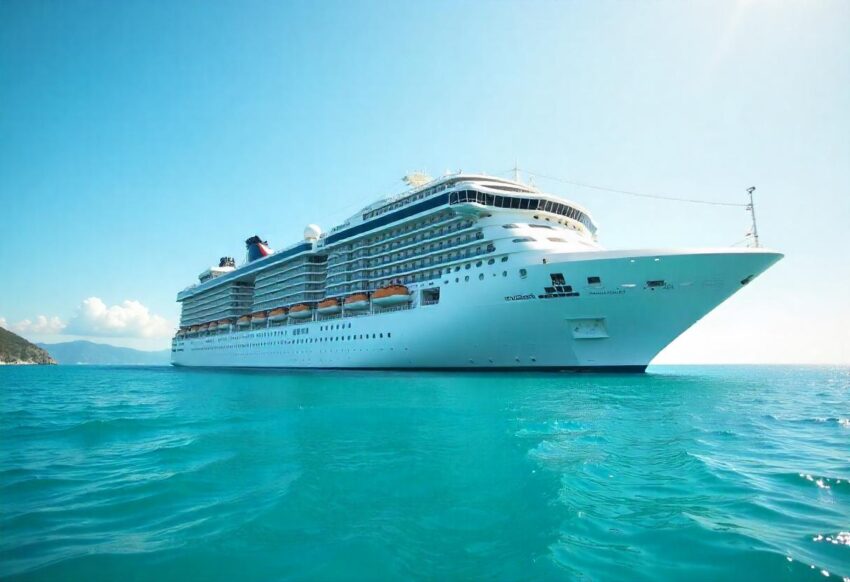Tuesday, June 24, 2025

The historic cruise ship Astoria, registered under Portugal’s Madeira International Shipping Register and one of the oldest passenger vessels still afloat, is set to be dismantled at the environmentally certified Galloo ship recycling yard in Ghent, Belgium. After more than seventy-five years of remarkable service—beginning as the Swedish ocean liner Stockholm and evolving into a beloved cruise ship—the Astoria’s final chapter begins with a sustainable decommissioning process. Sold at auction earlier this year, the vessel will be responsibly broken down with over ninety-five percent of its materials recycled, exemplifying modern European commitments to eco-friendly ship recycling and marking the end of an era in maritime history.
Historic Cruise Ship Astoria to Be Dismantled in Belgium After Auction Ends 75-Year Maritime Legacy
The long-serving cruise ship Astoria, one of the oldest passenger vessels still afloat, is now heading toward its final chapter. After spending the last five years out of service in the Port of Rotterdam, the vessel has been sold at auction and will be dismantled at a certified ship recycling yard in Ghent, Belgium.
Built in 1948, the ship was originally launched under the name Stockholm and began its life as a transatlantic liner during the post-World War II era. Over time, it evolved to meet the changing demands of the global cruise industry, ultimately becoming a boutique cruise ship. Now, more than seventy-five years later, the vessel is scheduled to be broken apart and recycled—a process that will take place under the strict environmental regulations of the European Union.
The vessel was auctioned on June 17, 2025, and sold for two hundred thousand euros. According to local media in Belgium, the successful bid was submitted by an anonymous party. The buyer also assumes responsibility for any outstanding debts or fees associated with the vessel. The recycling work will be handled by Galloo, a Belgian company recognized for its sustainable ship dismantling operations. The ship will be transported to the Port of Ghent, where the dismantling process is expected to begin shortly.
Galloo, which is fully authorized by the EU to conduct ship recycling in accordance with environmental protection legislation, is set to recover a substantial quantity of recyclable materials from the vessel. The company estimates that approximately twelve thousand tons of materials—ranging from steel and metals to glass, plastic, and wood—will be salvaged. Reports suggest that more than ninety-five percent of the materials collected will be processed into reusable raw resources, highlighting the growing importance of eco-conscious decommissioning practices in the maritime sector.
The Astoria is registered under Portugal’s Madeira International Shipping Register, which enables vessels to operate under favorable regulatory and taxation frameworks while still adhering to international maritime standards. It had been berthed in the Netherlands since early 2020 when its last operator, Cruise & Maritime Voyages (CMV), ceased operations during the early days of the global Covid-19 pandemic. Like many cruise vessels worldwide, the Astoria was placed into layup amid industry-wide travel shutdowns.
Before the pandemic, the Astoria had a long and colorful career. Initially constructed in Sweden and operated as the ocean liner Stockholm, the vessel became known internationally for its involvement in one of the most notorious maritime disasters of the twentieth century. In 1956, the Stockholm collided with the Italian luxury liner Andrea Doria off the coast of Nantucket, resulting in the sinking of the latter. While the Astoria was not fatally damaged in the incident and later returned to service, the accident became a defining moment in maritime history and added a dramatic chapter to the ship’s legacy.
In the 1990s, the vessel underwent an extensive refit and was rebranded as the Astoria, entering the modern cruise market. It operated for various cruise lines over the years and developed a niche appeal among travelers seeking classic, smaller-scale cruise experiences. With a capacity for 520 guests, the Astoria was praised for its traditional design and personalized onboard service. It became one of the few ships still in operation from the post-war era, appealing to maritime enthusiasts and history lovers alike.
After CMV ceased operations, the Astoria remained inactive. In 2021, there were brief efforts to revive the vessel as part of an alternative cruise experience tied to a cryptocurrency-backed venture. However, those plans were later abandoned, and the vessel continued to languish at the Port of Rotterdam, its future uncertain until this month’s auction.
With its sale finalized and dismantling scheduled, the Astoria’s time on the seas has officially come to an end. Its story reflects the evolution of global passenger travel—from the golden age of ocean liners to the rise of modern cruising. The ship’s ability to adapt across different eras and market demands made it a standout in maritime circles.
The upcoming dismantling also underscores the increasing significance of responsible ship recycling, especially in the European Union, where environmental standards have tightened in recent years. Older vessels like the Astoria are being decommissioned under careful supervision to ensure minimal environmental impact. By recovering and repurposing tens of thousands of tons of materials, Galloo’s work contributes to reducing waste and promoting sustainable resource management within the maritime industry.
The historic Portugal-registered cruise ship Astoria is set for eco-friendly dismantling at Belgium’s Galloo recycling yard, marking the end of its seventy-five-year maritime legacy. This auctioned vessel will undergo sustainable shipbreaking, reflecting Europe’s commitment to responsible recycling.
Although the Astoria will soon be physically gone, it leaves behind a remarkable legacy. Few ships can claim to have survived for more than seven decades, navigated major historical events, and transformed across multiple industries while still maintaining their structural identity. The Astoria’s final journey to Belgium represents not just the conclusion of a ship’s life, but also the close of a significant chapter in seafaring history.

